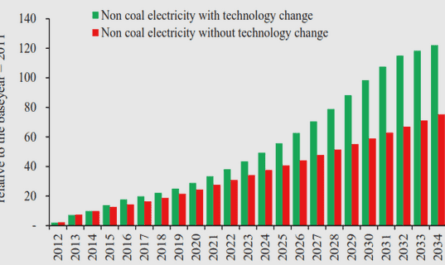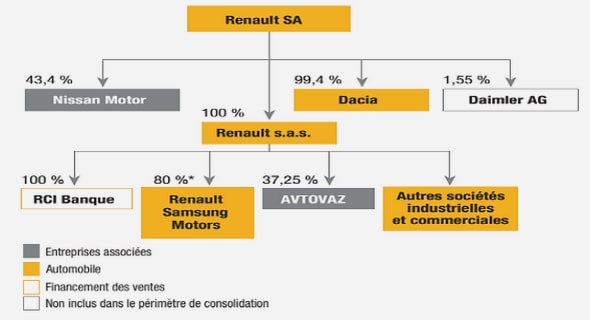Get Complete Project Material File(s) Now! »
Production of hydrogen by steam reforming of natural gas
Introduction
Hydrogen is an important raw material for the production of other industrial products like ammonia. In Pakistan hydrogen is produced in fertilizer plants and used to produce ammonia and urea. In Chemcad this plant is designed by using different type of reactors in two different cases.
Hydrogen
Hydrogen was first separated and identified by Boyle in the end of the 18th century; he produced “factitious air” from diluted sulfuric acid and iron [5]. Hydrogen, the lightest and most abundant element, is the first element in the periodic table, has an atomic number of one and an atomic weight of 1.000782519 on C12 scale and the electron configuration is 1s1[6]. The hydrogen (H2) molecule exists in two forms, in the ortho-form (parallel nuclear spin) and in the para-form (anti parallel nuclear spin) [5].
Hydrogen is very reactive at elevated temperature and with the aid of catalyst [6]. Hydrogen has three isotopes named (1) protium 1H1, consists of one valence electron and one proton in nucleus with no neutron [6]. (2) Deuterium (or heavy water) symbol is “D” or 1H2, consist of one valence electron and one each of proton and neutron in the nucleus [6]. (3) Tritium symbol is T or 1H3, consists of one valence electron and in nucleus there are one proton and two neutrons [6].
Uses of hydrogen
Hydrogen is an important raw material; it takes part in chemical reaction either by addition (hydrogenation) or by reduction potential, for example in refineries hydrogenation process can be used to increase the hydrogen content of heavy crude oil fractions and lighter fractions can be produced by the reduction of molecular mass. By these processes undesirable elements, such as sulfur, nitrogen and metal can also be removed. Hydrogen can be used also in petrochemical industry for hydrodealkylation, hydrodesulphurization and hydro cracking processes. In the food industry, hydrogen can be used for the production of margarine from liquid vegetable oil by the hydrogenation of oils or fats [6]. Ammonia, an important raw material for the production of urea (fertilizer), is produced by the direct reaction of hydrogen with nitrogen at high temperature. Hydrogen gas also has applications in metallurgy, is used as a shielding gas for welding to isolate the weld from atmospheric gases such as oxygen and nitrogen. Hydrogen has high thermal conductivity, is used for cooling rotors in electrical power generators. In nuclear power plant hydrogen isotopes, especially deuterium is used as a neutron moderator for fission reaction and tritium (hydrogen isotope) is a component of hydrogen bombs [7].
Production processes
Electrolysis of water
Decomposition of water produced hydrogen (H2) and oxygen (O2) gas in the presence of electric current. An electric current is produced at 2 different electrodes (made from platinum or stainless steel), hydrogen will appear at cathode (negatively charged) and oxygen will appear at anode (positively charged). These electrodes are separated by a diaphragm which allows the current to flow, but is sometimes gas-tight. Pure water is not suitable to use as an electrolyte because of its low conductivity so aqueous solutions of potassium or sodium hydroxide or sodium chloride etc. can be used [5].
Disadvantages of electrolysis
1. This process is very expensive method because the electrodes used in this process are very expensive.
2. It requires large investment on industrial scale.
3. As electrolytic hydrogen is created indirectly, using electricity as an energy carrier, it is only economic if electricity is extremely cheap. Only a vanishingly small proportion (of the order of 0.1%) of the world’s hydrogen is produced directly by water electrolysis.
Refinery processes
Hydrogen is produced from the byproducts of the following types of refinery processes [5]:
• Cokers and visbreakers
• Thermal cracking processes
• Catalytic crackers
• Catalytic reformers
Hydrogen is also produced by steam reforming of naphtha. Naphtha is a distillation cut between gasoline and kerosene. This process requires gasification and hydrogenation of sulfur to remove impurities as for natural gas [5].
Disadvantages
1. Naphtha is expensive raw material. Also the amount of naphtha varies with market conditions. As more gasoline is produced, less naphtha results same if more kerosene jet fuel is produced less naphtha results.
2. Production of hydrogen by steam reforming of naphtha is not preferred because it is not beneficial with respect to capital cost.
Partial oxidation
Partial oxidation is a reaction of hydrocarbons with oxygen to produce hydrogen and carbon monoxide. Firstly, sulfur or heavy metal contents are removed from the gaseous hydrocarbon because they are difficult to handle in hydrogenation or coking process [5]. This process is not economical because it requires an air separation plant, larger shift conversion, CO2 removal and gas cleanup is needed [6].
Oxidation reaction
CmHnSo + m/2O2 —– m CO + (n/2-o) H2 + o H2S [5] (4)
Disadvantage
Partial oxidation process requires 95-99% pure oxygen ordinarily obtained from air separation plant, which adds to both the plant investment and the operating costs.
Hydrogen from Conversion of Metals
Hydrogen can also be produced by reacting alkali or alkaline earth metal with water or steam.
Reaction is as following.
Me + H2O —– ½ H2 + MeOH [5] (5)
Producing hydrogen from metal is mostly in laboratory because metals are expensive to use only for producing hydrogen.
Production of hydrogen by steam reforming of natural gas
Using natural gas as a raw material, which contains small amount of impurities likes sulfur in the form of hydrogen sulfide. Sulfur is highly sensitive to a catalyst in the reformer and shift reactors, removes sulfur by using a zinc oxide bed (350-400 0C). If organic sulfur (merceptans, thiophene) is present, then zinc oxide bed is insufficient for converting sulfur compounds into hydrogen sulfide in hydrogenation stage using 5 % of hydrogen from product steam. Add water in the reformer in the inlet stream. Preheat it up to 520 0C. An endothermic reaction takes place in reformer and temperature at reformer outlet is 870 0C; which produces hydrogen along with carbon dioxide and carbon monoxide. Convert CO into CO2 in high temperature (423 0C) and low temperature (212 0C) shift reactors [5].
Advantages
It is the simplest and most economical method. 90% of Hydrogen is produced by this method, as low capital investment is required for this process. Natural gas (raw material) is a convenient, easy to handle, hydrogen feedstock with a high hydrogen-to-carbon ratio. This method is nearly about environmental friendly in comparison to other hydrogen production processes.
Selection of process
For the production of hydrogen I select to set up a model of hydrogen production by steam reforming of natural gas. In Pakistan natural gas is in large abundance and much cheaper than naphtha. The efficiency of the steam reforming process is about 65% to 75%, among the highest of current commercially available production methods.
Method
Raw material
Hydrocarbons are the main raw material for the production of hydrogen in chemical industry.
The two basic raw materials are:
1. Natural gas
2. Steam
Composition of Natural Gas (N.G.):
CH4 = 94.68%
CO2 = 0.02%
N2 = 3.89%
Inert = 1.41%
H2S = traces
Equipment
Equipments used for the production of hydrogen in Chemcad software are:
1. Heat exchanger (for heating stream).
2. Gibb’s reactor in case 1 (desulphurizer) and in case 2 (desulphurizer, reformer, high & low temperature shift converter).
3. Mixer.
4. Fired heater (heating stream).
5. Stoichiometric reactor in case 1 (reformer).
6. Equilibrium reactor in case 1 (high and low temperature shift converter).
7. Column (CO2 absorber).
Chemcad model for the production of hydrogen is shown in figure 3 and 4.
Desulphurization
The natural gas is available at 38 °C and 40 kg/cm2 containing traces of sulfur. Sulfur is poison to several catalysts. Natural gas is purified in the desulphurization unit (1) to eliminate the traces of sulfur. Natural gas flows through Gibb’s reactor at 400 0C.
Reaction in desulphurizer is: H2S —– H2 + S (6)
In Literature [16] it is mentioned that a zinc oxide bed can be used as a catalyst to remove sulfur but it is not possible to simulate this process in Chemcad.
Steam reforming
The desulphurized natural gas from desulphurizer and M.P. steam at 370 °C and 38kg/cm2 are mixed in mixer. Preheated the stream in the heat exchanger (2) (520 0C) and fired heater (3) (870 0C). Stream enters into reformer (4). An endothermic reaction takes place. Reaction in reformer:
3H2O + 2CH4 870 0C CO + CO2 + 7H2 (7)
Reformer in case-1 is Stoichiometric reactor and 100% conversion of methane.
Reformer in case-2 is Gibb’s reactor which converts only 75% of the methane.
CO shift conversion
The reformer gases are at 870 °C and are cooled to 354 0C in heat exchanger (5). Reformer gases at high pressure (38 kg/cm2) are sent to the shift converter.
CO + H2O 423 0C CO2 + H2 (8)
The conversion of CO to CO2 is done in two stages in two different converters. The first stage is the High temperature shift convertor (6).
H.T.S.C in case-1 is equilibrium reactor which converts 77.5% CO into CO2.
H.T.S.C in case-2 is Gibb’s reactor which converts only 73.88% CO in to CO2.
The gas is cooled down to a temperature of 212 0C in heat exchanger (7). The second stage is low temperature shift convertor (8).
CO + H2O 212 0C CO2 + H2 (9) L.T.S.C in case-1 is equilibrium reactor which converts 86.4% CO into CO2.
L.T.S.C in case-2 is Gibb’s reactor which converts 93% CO in to CO2.
Carbon dioxide removal section
Carbon dioxide is removed in absorber (9). 3% mono ethanol amine (MEA) solution is used for the removal of carbon-dioxide. MEA solution enters from absorber top plate and the gas enters from lower plate. Carbon dioxide collected with MEA in the lower part of the absorber.
Table of contents :
Abstract
Executive summary
1. Introduction
1.1 Definition of project
1.2 Aim of the project
1.3 Chemcad
1.3.1 Advantages of Chemcad
1.3.2 Applications of Chemcad
1.3.3 Industries using Chemcad
1.3.4 Chemcad modules
1.4 Reactors
1.4.1 Stoichiometric reactor
1.4.2 Equilibrium reactor
1.4.3 Gibb’s reactor
1.5 Method to run Chemcad
2. Production of hydrogen by steam reforming of natural gas
2.1 Introduction
2.2 Hydrogen
2.3 Uses of hydrogen
2.4 Production processes
2.4.1 Electrolysis of water
2.4.2 Refinery processes
2.4.3 Partial oxidation
2.4.4 Hydrogen from Conversion of Metals
2.4.5 Production of hydrogen by steam reforming of natural gas
2.5 Selection of process
2.6 Method
2.6.1 Raw material
2.6.2 Equipment
2.6.3 Desulphurization
2.6.3 Steam reforming
2.6.4 CO shift conversion
2.6.5 Carbon dioxide removal section
2.7 Results
2.8 Discussion
2.9 Conclusion
3. Production of ethylene glycol by hydrolysis of ethylene oxide
3.1 Introduction
3.2 Ethylene glycol
3.3 Uses of ethylene glycol
3.4 Production of ethylene glycol
3.4.1 Ethylene Carbonate Process
3.4.2 Halcon Acetoxylation process
3.4.3 Hydrolysis of Ethylene Oxide
3.5 Selection of the process
3.6 Method
3.6.1 Raw Materials
3.6.2 Ethylene oxide reacts with water to form ethylene glycol
3.6.3 Ethylene glycol dewatering
3.6.4 Purification of ethylene glycol
3.7 Results
3.8 Discussion
3.9 Conclusion
4. Production of nitric acid by oxidation of ammonia
4.1 Introduction
4.2 Nitric acid
4.3 Uses of nitric acid
4.4 Production of nitric acid
4.4.1 Chilean nitrate process
4.4.2 Birkeland-Eyed process
4.4.3 Ammonia oxidation process
4.5 Selection process
4.6 Method
4.6.1 Raw material
4.6.2 Ammonia oxidation
4.6.3 Steam super heater
4.6.4 Waste heat boiler
4.6.5 Platinum filter
4.6.6 Preheater
4.6.7 Cooler and condenser
4.6.8 Purification of nitric acid
4.7 Selection of pressure process
4.7.1 Single pressure process
4.7.2 The Dual-Pressure Process
4.7.3 Selecting single pressure process
4.8 Results
4.9 Discussion
4.10 Conclusion
5. Production of sulfur from acid gas
5.1 Introduction
5.2 Sulfur
5.3 Uses of sulfur
5.4 Production of sulfur
5.4.1 Production from native ores by distillation
5.4.2 Frasch process
5.4.3 Iron oxide process
5.4.4 Activated carbon process
5.4.5 Claus process
5.5 Selection of process
5.6 Method
5.6.1 Raw material
5.6.2 Oxidation of acid gas
5.7 Results
5.8 Discussion
5.9 Conclusion
6. Rotary dryer
6.1 Statement
6.2 Humidity
6.3 Results
6.4 Conclusion
7. Overall conclusion
Acknowledgement
Reference
Appendix


